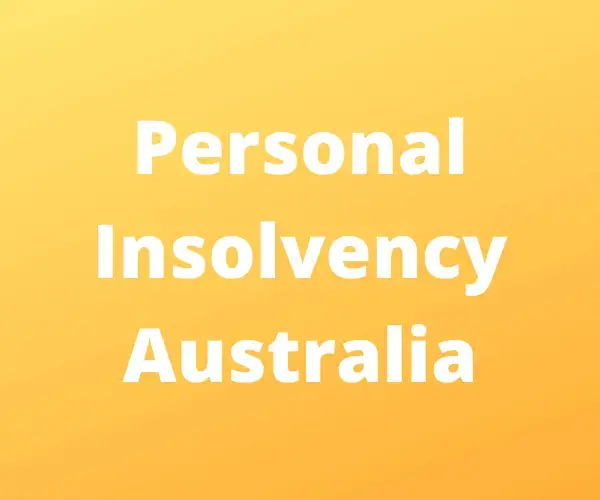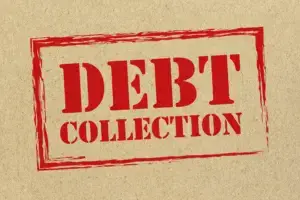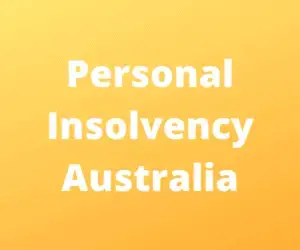You might have heard of personal insolvency as an option before, especially if you’re going through difficult times. Perhaps unpaid credit card repayments, loan arrears and bills which are well past their due dates.
In this guide, we’re going to talk about what is “personal insolvency” and the differences it has when compared to other types of debt.
There are of course numerous debt solutions out there and you should find the one that best suits your needs. Having trouble deciding? Perhaps get in touch with us today.
Australian personal insolvency
In Australia, personal insolvency agreements are legally binding. It’s a document where you declare an agreement between yourself and your creditors when you can’t afford to pay back your debts anymore.
This isn’t something you can do right away. If you’re looking at this as an option, then you might prefer some other strategies instead. In other words, you need to be struggling to make ends meet with your debt obligations for some time before a collector will be open to this.

How it works is that you’ll setup a payment arrangement over a defined period. This can be 4 years or 7 years. It really depends actually and some people even do less than 2 years.
The best part is that you can settle your hard-to-pay debts for less than what you owed. The balance will be officially written off (with a black mark on your credit history) and you’ll be able to get on with your life.
Where it applies
Choosing the path of personal insolvency is only for certain types of debts. These are typically unsecured debt like a credit card balance or store card (David Jones for instance), personal loans and payday loans. Some people even use these agreements for overdue rent, legal and accounting fees or medical bills.
What you can’t do is use a personal insolvency agreement for a secured loan like car finance or a mortgage on your house. This is because there is a physical asset that they would prefer to repossess and sell the asset (car or house) to recover the funds you owe. It’s easier from a debt recovery perspective and this is why the interest rate is lower for them.
Criteria for approval
As we previously said, you can’t go and just take out one of these for any old reason. There is criteria that individuals in Australia must meet for personal insolvency agreements to be eligible under the Bankruptcy Act.

The most important thing: You’ve got to be considered insolvent. This means you can’t actually pay anything when repayments are due, because you don’t have the money available to you.
Then you must meet any of the following:
- Your unsecured debts total more than $111,675.21
- Equity in your assets exceeds $111,670.21
- You have both regular income and annually you earn more than $83,756.40 after paying the Australian Tax Office.
(These numbers are current since February 2018 and may have changed since)
As you can see, most people wouldn’t qualify actually. You need a lot of assets and income before going down this pathway.
Not only that, but people who choose this path are choosing a more relaxed way of dealing with their affairs. See – this isn’t the same as bankruptcy. It’s like a light-version where you still regain control and assets, such as your house or car.
Future challenges
Before you decide that this is a pathway you should go down, we recommend you instead look at the consequences and challenges that personal insolvency agreement in Australia could create.
Straight up – this is going to cost you money. You need to pay fees for this process, both upfront and ongoing.
Then we have the big problem: Your details, for the rest of your life, will be shown on the National Personal Insolvency Index. That’s permanent, man.
Not only this, but it will be shown on your credit file for around 5 years. You can expect it to knock down your credit score by many points.
If you then miss repayments, then the consequences can be severe. Creditors can take you to court and make you go bankrupt if they’re not happy.

Should you suddenly need a car to get you to and from work or replace some stuff for work, then this presents another challenge. Most banks will be unwilling to lend money to you, as it’s risky for them.
Personal insolvency agreements are yet another game of short term gains for long term pains for some people. Others do find them as a good option.
Getting started
The process to create your personal insolvency agreement is a bit complex actually. Remember that this is an official process, not some template from the internet that you just print off.
Here’s a brief outline:
- Appoint your own Controlling Trustee
- Allow your assets to be controlled by them
- Let them research your financial affairs in-depth
- Wait for them to prepare a report for your creditors
- Also, they will create a proposed personal insolvency agreement
- Within 25 days of appointment, a meeting will be called
- During that meeting, your creditors will cast a vote based on the proposal
- The majority must agree for it to be legally binding
- Once approved, you might be released from debt obligations
- Start paying your Controlling Trustee for the term of the agreement
The process does vary between Australian states and territories. This is why legal expertise and advice is best suited to you by someone who can assess your personal situation and make recommendations.
We often don’t recommend people down this pathway because of the complexities involved and the ramifications for your future. That said, for some people, it’s the best solution for their needs at this time.
How to avoid personal insolvency
You might want to avoid personal insolvency which is a good thing. We’d also recommend that you avoid bankruptcy too which has more severe consequences.
Instead, what you can do is:
- Reduce monthly expenses. Stop buying expensive stuff and cancel subscriptions that you don’t need.
- Consider a debt consolidation loan to help you reduce monthly payments. They can roll your credit card and car loan repayments into one payment that’s often less.
- Use Gumtree or eBay to sell your unwanted stuff online. That’s an easy way to raise a few hundred dollars today.
- Get yourself additional work, whether in the evenings or on weekends. That extra income can go towards the debt collectors without you needing to worry about potential Court action. Remember that personal insolvency is expensive as well with fees to pay.
- Speak to the National Debt Helpline for free and unbias advice.
Those are some viable alternatives which you can start doing today, instead of jumping the gun and going for a personal insolvency agreement. These alternatives aren’t so likely to negatively impact your future and can create some quick wins on your journey towards a debt-free lifestyle.
In summary
We know you’re doing it tough. It’s not easy managing everything yourself.
You thought you can handle everything and it all caught up to you. It’s time you take action and do this seriously.
If you want some guidance, consider a 100% FREE Discovery call to assess your situation. We’d love to hear from you today.




